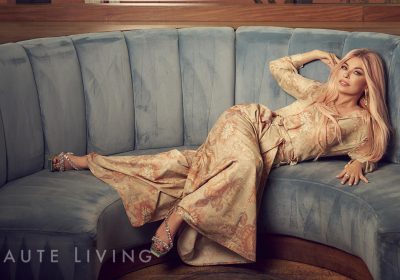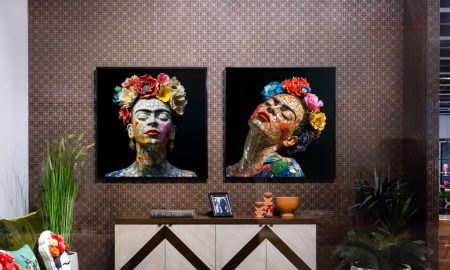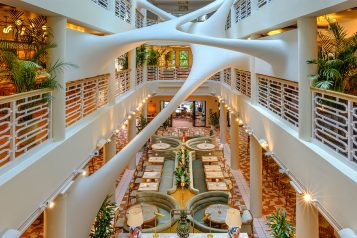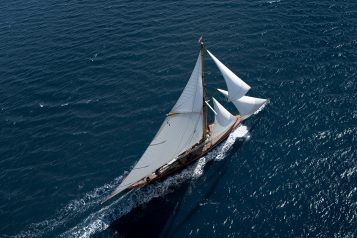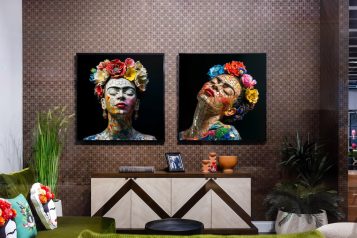February 14, 2009, was not only a day for sweethearts to celebrate the splendor of being in love, it also served as the much-anticipated launch date for one of the newest superyachts from Baglietto Shipyards, and thereby a day for yachting enthusiasts to celebrate their own love of ships and the sea.
Shortly after her February debut, the 137-foot Natori embarked on what is sure to be a lifelong career chock-full of accolades. Her summer delivery and appearance at the MYBA Charter Show 2009 in Genoa earned her the “Best Motor Yacht in Show” award, thanks in large part to the vision and courageous design approach of the powers that be at Bannenberg & Rowell.
The London-based design firm has been the proud recipient of many awards throughout the years, including for their work on the innovative and much acclaimed Predator. Their creations inspire a legion of imitators and have become the benchmark for blending modern day designs with a style that celebrates a proud naval heritage.
Today, Dickie Bannenberg is captaining the company through the 21st century, taking over after the unexpected death of his father Jon Bannenberg, a revered giant in the industry of interior yacht design. “I worked with my late father for more than 15 years in the business before his unexpected death in 2002 at the age of 72. We all thought he would keep on drawing and designing until he was 100,” says Bannenberg. “I picked up the pieces and reestablished the company over the following years, in close collaboration with Simon Rowell, the creative director who joined me in 2003 after a long and notable career in the hotel design world.”
The result of such a partnership is one that sketches impeccable designs, in addition to creating a customized line of yachting furniture. “In my father’s time, he too would custom-design furniture, so it’s really a continuation of this tradition,” he explains. “We think that our projects should have that higher level of design input, rather than the easier option of specifying ‘off-the-shelf’ furniture,” says Bannenberg, going on to detail that their expertise in custom crafting extends to light fittings, china, glass, and the occasional cutlery set. Crew uniforms and logo creations are also part of their design inventory, along with a collection of custom-designed flip-flops.
Bannenberg & Rowell was first commissioned for Natori’s interiors when the owners of the yacht saw their work for a West Coast client on the refit of the 166-foot motor yacht Illusion (Bannenberg & Rowell’s designs on that project were impressive enough to earn a feature spot in Architectural Digest).
Bannenberg explained that because Natori was built at Baglietto’s shipyard in Italy, Italian design influences were woven into the early concepts for the yacht. The clients also enjoy a residence in South Africa and were keen to incorporate some of that identity as well. “This resulted in unusual fusions of decorative influences, overarched by a tailored, layered, contemporary feel that is present throughout the interiors,” he says. In addition to the judicious use of African materials such as zebra hides and African fabrics, tropical olive, ebony, shagreen, and parchment are prevalent as well. When orchestrating the sampling process for the various hard woods, Bannenberg’s precise attention to detail compelled all involved to deliver nothing short of excellence. “We drove the yard slightly nuts with the tropical olive on this project,” he says. “We initially gave them a small piece that had an interesting figure in it. It must have been about 10 samples later when they finally produced one that we were all happy with.”
In sourcing the shagreen for the superyacht, they visited London’s Notting Hill with the client and spent time in Bill Amberg’s workshops. “We sifted through piles of shagreen skins in a flurry of pale colors to find the right one. Combining them with 21st century detailing and handwriting of course is important.”
Bannenberg admits that one of his favorite elements of the interiors is the sense of drama when entering the main saloon from the aft deck and the surprising sense of space, helped by a full width superstructure on the port side of the ship. And indeed one can see why. Apart from the striking panel on the centerline, which again came courtesy of Bill Amberg, Bannenberg explains that the walls are finished in blocks of caramel-colored suede that is both calm and crisp. On either side of the entrance at the aft end, full-height storage cabinets are finished in a pale limestone-colored lacquer with applied horizontal detailing.
The flooring of the main deck lobby incorporates oak, tropical olive, and rosewood to create a signature, circular design feature. “We combined these three principle woods in a motif with nuances of Italian graphic imagery of the 1930s and ’40s. It serves as a kind of convergence point from which the stairs and the nickel screen radiates,” Bannenberg says. Though the main saloon and dining room share an open floor plan, the space is separated by a buffet of ebony, stone, parchment, and saddle stitched leather, which houses a 42-inch plasma television.
When it comes to accommodations, Natori surpasses the standard with two full-width VIP cabins adorned in rosewood and a palette of platinum, nickel, and cream. In the two additional twin cabins on the lower deck, guests are greeted with chocolate brown Venetian blinds contrasted against pale washed oak.
While pictures seem to dictate that the custom-designed sleigh bed is the most dramatic feature of the full-width master suite, Bannenberg reveals that the owners’ shower, with a wall of iridescent scales shimmering in the light, is another one of his favorite design details on board.
With exterior designs from the fingertips of naval architect Francesco Paszkowski, Bannenberg & Rowell enjoyed an excellent foundation for their avant-garde designs. Expansive windows allow for varying tones of light to saturate the interiors, which are complemented by an excess amount of outdoor deck space. In addition to the interior details, Bannenberg & Rowell also designed the large pool area located on the sun deck, which also offers guests a chance to take in the salty air from the lounging area or alfresco dining table.
The award-winning designs from Bannenberg & Rowell demonstrate their commitment to the work of the great masters, while plowing ahead with an innovative and risk-taking approach that delivers nothing short of jaw-dropping admiration.


